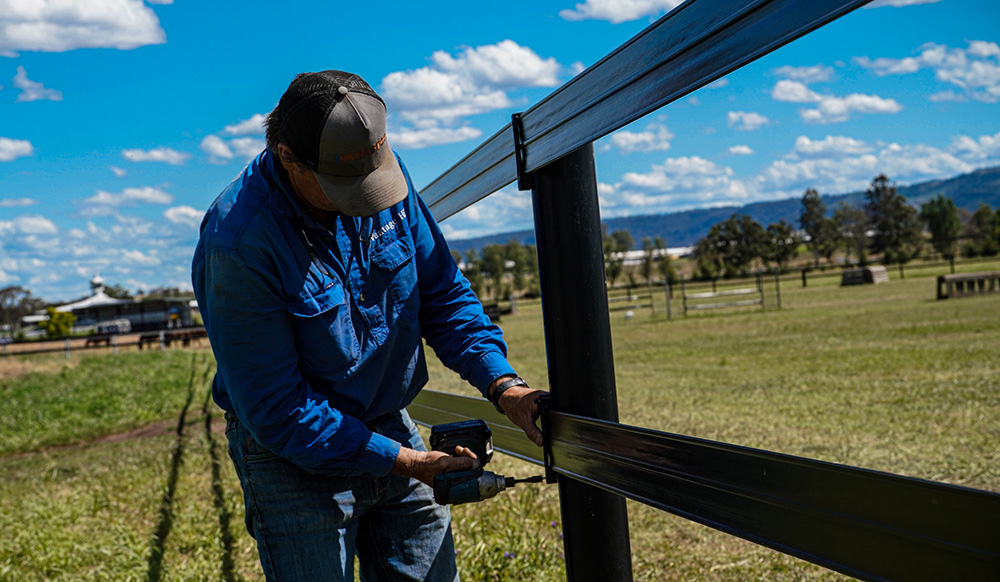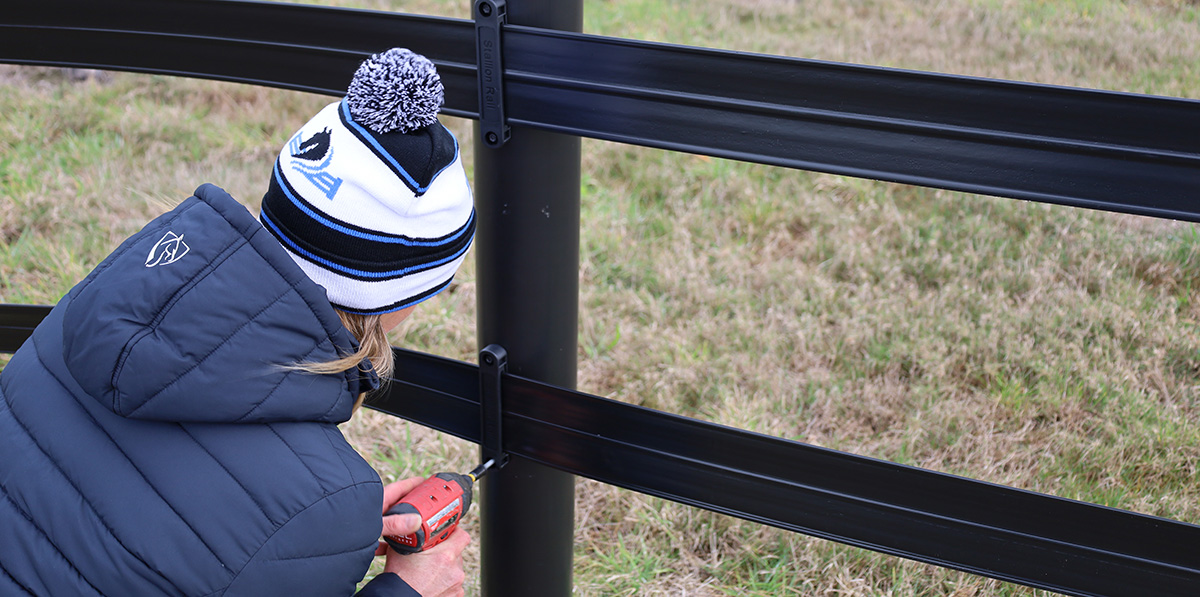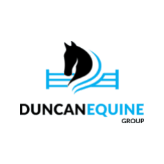The ultimate DIY Horse Fencing Solution with Duncan Equine
Established over 30 years ago, the Duncan Equine Group have worked hard to develop the ultimate complete horse fencing solution suitable for DIY installation and contractors alike.
As horse people we have ensured that our flexible rail is the safest and most technically advanced horse fencing system. We have everything you need to build attractive and safe paddocks for your horses including flexible rail, coated wire, attachments, fence posts, gates, tools and accessories.

DIY Horse Fencing Tips
Plan, plan, plan:
Whether you are looking to install horse fencing on your own or engage a contractor, the key to a successful project is – planning. It’s important to plan for the future by having a master fencing plan, even if you only plan to start with a couple of paddocks.
Working with Duncan Equine to create a map to scale on a satellite image of your property will considerably help you and your contractor and allow Duncan Equine, the contractor and the property owner to all work from the same map.
Use the right tools
Before trying to install any fence, it’s important to have the right tools. Duncan Equine has specifically developed installation tools including the bending tool, tensioning tool with ratchet handles and galvanised spinner. These tools will ensure your rail has enough tension and assist you in installing their products quickly and efficiently.
Make fencing quicker using the right attachments
Both Stallion Rail and Shockcoat have been designed for easy installation using their suite of brackets, attachments and joiners. Duncan Equine will ensure you order the correct amount of each type of attachment when assisting you in planning your fencing layout. Each bracket is easily installed with a small driver and the provided Tek Screws.
Horse Fencing Posts
Make sure your posts are evenly spaced and driven 1/3rd into the ground. Therefore, a 2100mm post will make up to a 1400mm fence, and a 2400mm post will make a 1500mm fence. Posts should be spaced approximately 4 metres for flexible rails like Stallion Rail, and 5 metres for Shockcoat. Proper spacing is essential for adequate tension and to prevent fluttering in the wind, maintain your fence’s integrity and effectiveness over time.
Depending on the equipment you have available and the number of paddocks, it may be best to have a fencing contractor drive the posts in for you. Future proof your property with our Premium PVC Round Fencing Posts that will save you time and money by avoiding painting, splintering, horses chewing or windsucking, cracking and can be driven in by any post driver.
End Assemblies
It’s important to ensure end assemblies are robust and strong enough to withstand the tension of the rail. Strainer posts should be the same distance from the ground as they are out. Therefore, if you’re building a 1500mm fence, a 3000mm stabiliser post is required.
Traditional timber box end assemblies have a wire diagonal brace. With timber box assemblies, we can replace the wire with a 12 mm Rod inside a black poly pipe to increase safety, insulate from your fence, and look better if you’re using Black Stallion Rail.
With Steel End Assemblies, multiple horizontal stay rails remove the need for the diagonal brace. Steel will outlast timber, especially with horses that may chew timber posts. It’s easy to build strong steel end assemblies without the need to weld using Ezy Ends. Ezy Ends slot seamlessly into oval rail and screws onto round or square posts saving you both time and money.
Setting up electric fences
Buy a Fence Tester so you know the number of volts and amps of your fence to regularly ensure it is working. Complete one fence line/paddock at a time and then test it, as opposed to connecting 10 paddocks and discovering there is a fault somewhere. Isolation switches are very useful for turning areas on and off and will make future fault-finding quicker and simpler.
Shut the Gate
It’s important to ensure that your paddock gateways are wide enough (3.6m minimum with 4.2m the ideal)
to drive machinery into in case of emergencies or maintenance and positioned for easy turning from laneways. 6m is wide enough for a quad or buggy and 8m is wide enough for a car to do a 3-point turn in a laneway.
Duncan Equine have thought about everything when developing their heavy-duty horse safe gate. The oval rail top and bottom are wide to absorb impact and reduce injuries, while the small mesh will prevent the smallest of hooves from getting stuck.

Ready to take on a horse fencing project yourself?
Contact Ducan Equine today to discuss your project obligation-free and to obtain a free property plan and quote using their Complete Fencing System.









